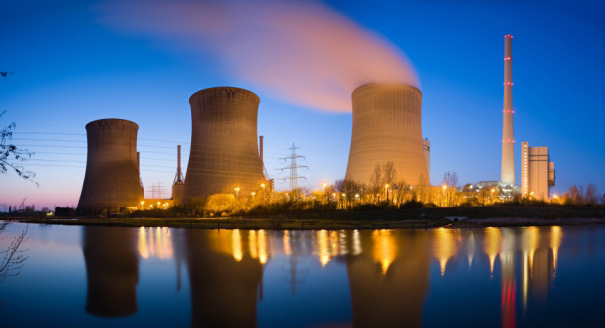At the tenth annual Brussels Forum, a meeting of North American and European policymakers and business leaders that ended on March 22, Børge Brende captured the gathering’s zeitgeist when he declared that “[Russian President Vladimir] Putin has made a cardinal mistake . . . energy security [has never been] so high on the EU political agenda.”
Though Brende, the foreign minister of Norway, looks at the European Union from the outside, his statement perfectly reflected the mood of two transatlantic energy discussions in which I participated last week.
The first was a private breakfast with a delegation from the European Parliament’s Industry, Research, and Energy Committee, hosted at Carnegie’s Washington office. The second was a meeting with officials from the European Commission on the sidelines of the Brussels Forum.
On TTIP, the EU must make a more cogent and strategic case for the inclusion of a separate energy chapter within the accord. There is currently only a vague discussion on the importance of establishing twenty-first-century rules, in accordance with Western principles, that will govern global trade in energy. The Americans are unconvinced of the strategic value of this approach and believe that energy is already sufficiently covered in other chapters on goods and services.
A more fruitful avenue could be to explore the role of renewable energy and energy efficiency—sorely lacking—in a TTIP energy chapter. Policymakers should also think more deeply about how such a chapter would shape energy relations with other key regional players, such as Canada in North America and Turkey in Europe.
If the chapter is meant to serve as a template for twenty-first-century trade agreements, it makes little sense for the United States and the EU to ignore the world’s fastest-growing energy resources or their most important neighbors.
The EU must make a clearer case for a separate #energy chapter in #TTIP.Tweet This
On the subject of an EU energy union, last week’s discussions offered a potent cocktail of idealism and impatience. Many of the members of the European Parliament present in Washington described the energy union as a project aimed at not only diversifying supplies but also expediting true energy independence from Russia and other suppliers that might use energy as a political weapon.
But it is not clear that European energy autarky is preferable to the status quo. Russia possesses the largest gas reserves of any country in the world and is Europe’s lowest-cost supply option by far. The EU will remain dependent on large volumes of Russian gas imports for decades to come. So the question is how to make the best of this reality by creating competitive markets that will both achieve low prices and discourage the politicization of energy supplies.
Increased European production is not a feasible strategy.
EU domestic energy production is in decline, particularly in light of a forthcoming cap on gas production from one of continental Europe’s largest fields, driven by seismic activity concerns. At the same time, most member states are reticent to accept the environmental risks associated with unconventional hydrocarbons. These are not necessarily unwise choices but will require increased pragmatism when it comes to continued reliance on energy imports.
Much of the discussion in Washington focused on the best way to achieve, at minimum, diversification of gas imports. The construction of new liquefied natural gas (LNG) import facilities—based on the expectation of significant new supplies from the United States—is often trumpeted as a crucial step toward such diversification.
The European Commission’s recent communication on the energy union acknowledged as much, stating that the commission “will also work to remove obstacles to LNG imports from the US and other LNG producers.”
It is true that LNG imports into Europe have provided countries in the region with greater leverage when renegotiating supply agreements with Russian energy giant Gazprom. However, completely new LNG facilities are highly expensive options, from the capital expenditure required to the financing that must be secured to the price of the gas that is finally delivered.
Moreover, Western Europe’s utilization of its existing LNG import capacity has fallen markedly in recent years and currently hovers under 30 percent. With better interconnectors and a more robust internal market, gas could easily flow from these underused terminals by pipeline to Central and Eastern Europe to create alternatives to Gazprom supplies.
U.S. LNG is a theoretical option to supply either new or existing terminals in Europe, and it is in this context that TTIP is most often raised as a lever for enhancing European energy security. The EU has been pushing hard in the negotiations for a dedicated energy and raw materials chapter that would possibly include provisions to ensure expedited U.S. LNG exports to Europe.
This debate, however, is largely irrelevant. Existing provisions ensure that as soon as the EU becomes a partner of the United States in a free trade agreement, LNG export applications will be approved nearly automatically.
Most officials admit in private that finalizing #TTIP in 2015 is unrealistic.Tweet This
Despite the rose-tinted glasses worn by many U.S. and EU officials when discussing TTIP in public, most concede in private that finalization of TTIP in 2015 is completely unrealistic, and that the deal’s successful conclusion in even 2016 or 2017 is an open question. The reality is that any commercially viable U.S. LNG export applications among the nearly 40 already submitted will be authorized, contracted, and either built or under construction by the time TTIP takes effect.
Commitments to the transatlantic relationship and to strengthening European energy security are not in short supply in either Washington or Brussels these days. But as the TTIP negotiations on energy show, the candor and creativity needed to turn such commitments into durable, transformative outcomes are regrettably scarce.








